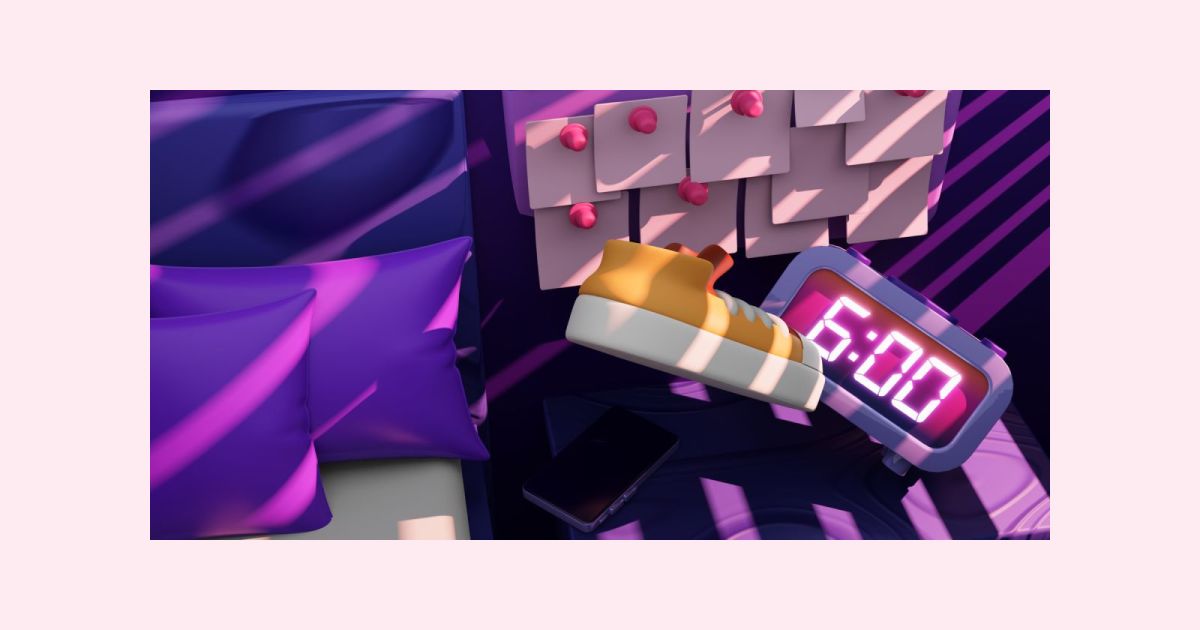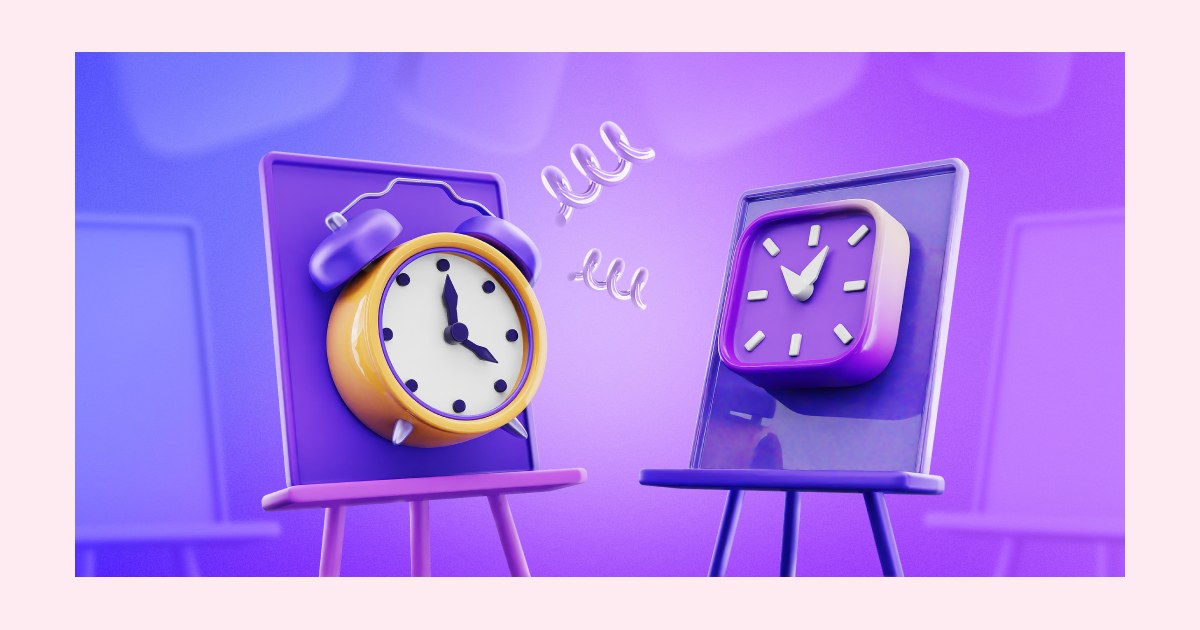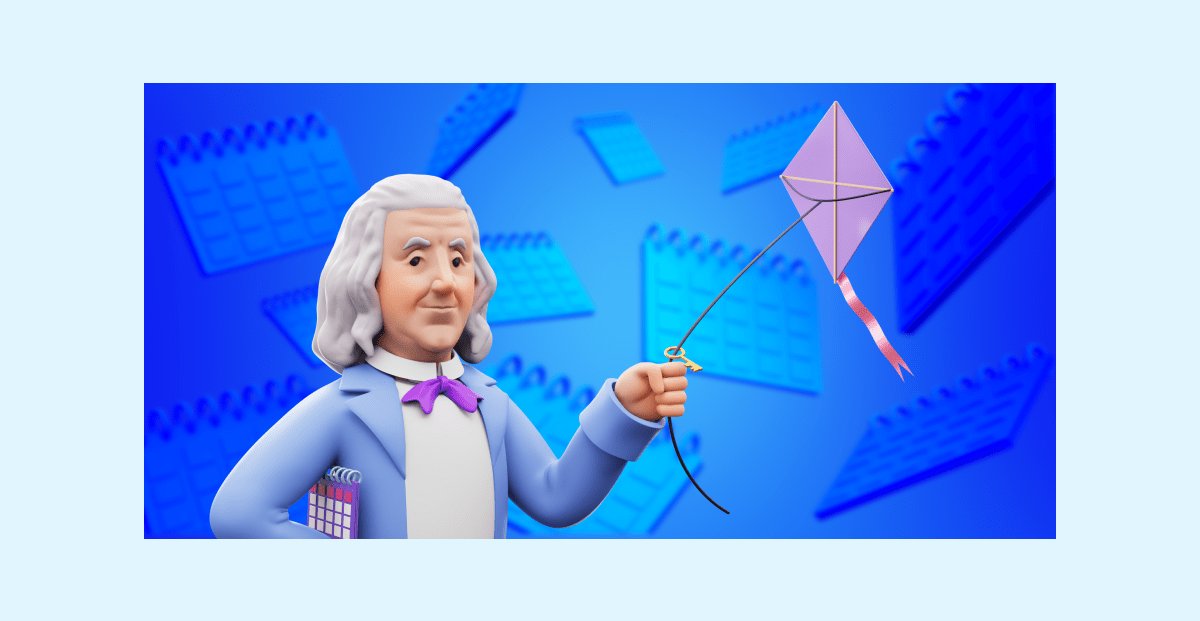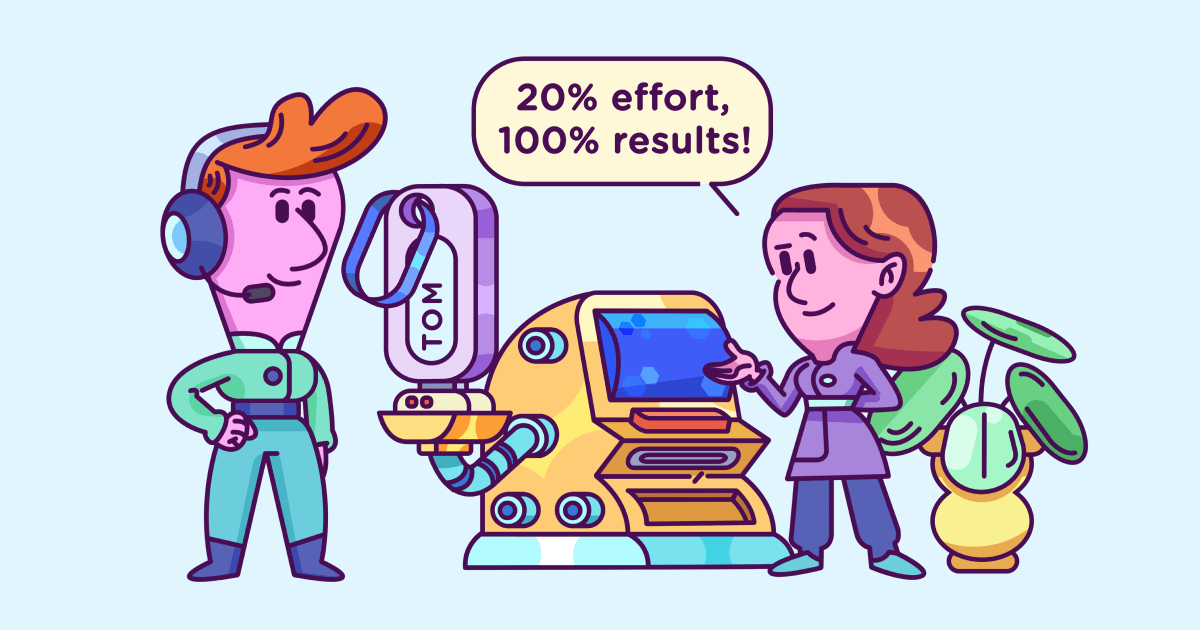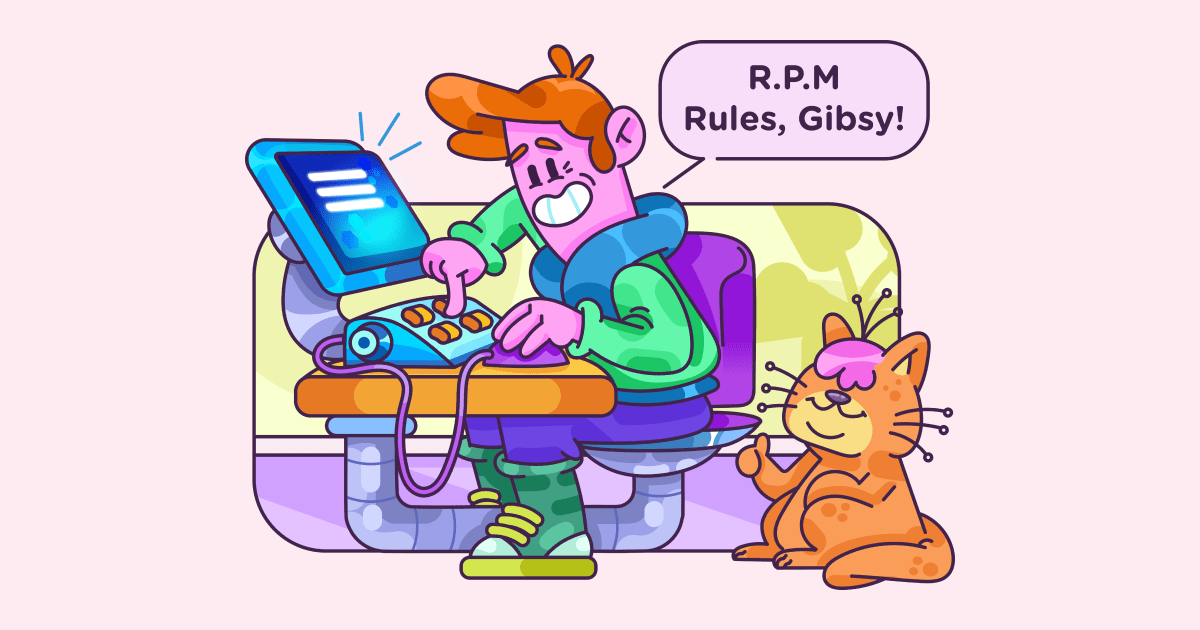How to engage in Deep Work and achieve your goals
Last updated on: January 24, 2022
You’ve heard the term deep work, but you’re not sure what exactly it means and if it’s something that you should pay attention to and apply to your work? In this article, we’ll define what it is, why it’s important, and how to get into the state of the uninterrupted workflow.
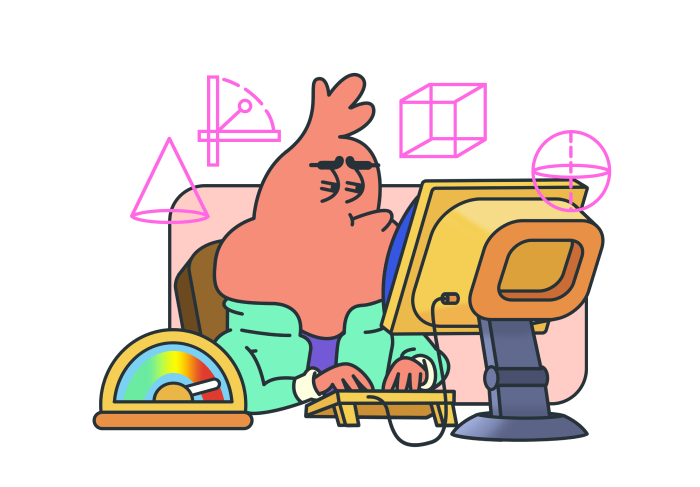
Table of Contents
What is deep work?
First, let’s define what deep work is. According to Cal Newport’s Deep Work: Rules for Focused Success in a Distracted World, everything that falls under “…professional activities performed in a state of distraction-free concentration that push your cognitive capabilities to their limit” can be considered deep work. These efforts create new value, improve your skill, and are hard to replace.
Thinking up a strategy, coding, writing new content from scratch, or designing a logo are all examples of deep work.
On the contrary, there is also shallow work. It can be defined as non cognitively demanding, logistical-style tasks, often performed while distracted. These efforts tend to not create much new value in the world and are easy to replicate.
Responding to a bunch of emails, attending update meetings or texting do not require a lot of effort, so they are perfect examples of shallow work.
Why is deep work important?
According to Newport:
“…deep work is becoming increasingly rare at exactly the same time it is becoming increasingly valuable in our economy. As a consequence, the few who cultivate this skill, and then make it the core of their working life, will thrive.”
If you are able to master hard things and produce at an elite level in terms of both quality and speed, you will be very hard to replace because that’s rare. Consequently, you will be able to land the best jobs.
Many find meaning and significance through deep work, as they are challenging themselves to their intellectual limits. According to Hungarian psychologist Csikszentmihalyi:
“The best moments usually occur when a person’s body or mind is stretched to its limit in a voluntary effort to accomplish something difficult and worthwhile.”
Deep work gives a lot of personal satisfaction.
But how to do deep work?
Short answer: High-Quality Work Produced = (Time Spent) x (Intensity of Focus)
The long answer is, well, the rest of the article.
Four deep work strategies
There are four ways to incorporate deep work into your schedule. You can choose either:
- the monastic philosophy of deep work scheduling,
- the bimodal philosophy of deep work scheduling,
- the rhythmic philosophy of deep work scheduling, or
- the journalistic philosophy of deep work scheduling.
When deciding which one will work best for you, keep in mind that not every philosophy is suited for every job; each one requires a certain lifestyle and work schedule.
The monastic philosophy of deep work scheduling
Your whole workday consists of deep work, while shallow work is minimized. Those who practice monastic philosophy are pursuing a well-defined and highly valued professional goal and the majority of their professional success comes from doing that one thing exceptionally well.
An example would be a writer who spends the whole workday alone in a room, working on their book and very rarely responding to calls or emails. According to fictional writer Neal Stephenson, there are two mutually exclusive options (for him, at least): writing good novels regularly or answering a lot of emails and attending conferences, and, as a result, producing lower quality novels less often.
However, it also means you have to say “no” to new opportunities that may arise while you’re working on your main task.
How does the monastic philosophy work?
If you are up for a challenge, then the monastic philosophy of deep work scheduling is great for you.
Pick a time frame (a month, for example) when you will be deeply engaged in deep work. This means that every task that doesn’t require a lot of mental effort, such as texting or social media, is out of the question.
You become unavailable for everything unrelated to your major project because shallow work is strictly banned when practicing the monastic philosophy.
Who is the monastic philosophy for?
Although the results of the monastic philosophy of deep work scheduling are highly rewarding, most professions are not exactly aligned with it. If you are a social media manager, being completely MIA from social media or responding to an email after a month could probably cost you your job.
However, if you are a scientist or a writer trying to complete a novel, the monastic philosophy is your best choice. This type of scheduling helps entirely remove distractions and allows for long stretches of uninterrupted, focused work.
The bimodal philosophy of deep work scheduling
Being a combination of the monastics’ productivity and shallow work, the bimodal philosophy allows you to dedicate a chunk of your time to deep work while it leaves you with the rest of the time for everything else.
The blocks of your deep work session can be as long or as short as you prefer, from days to an entire year. However, an optimal minimum is one full day, because a few hours are not enough to get into the deep work mode.
After you’re done with your deep work chunk, you can give your attention to other tasks. At least that’s what Carl Jung did. He used to spend a block of his time alone, writing. For the rest of the time, he ran a clinical practice, had a social life, went to coffeehouses, and attended university lectures.
💡 Clockify Pro tip
- Everyone needs help with combating distractions. Whether you’re battling workplace distractions or you find it difficult to stay focused at work, we’ve got your back.
If you want to go a step further, you can opt for dedicating an entire season to one project and leaving the rest of the year for minor tasks.
Who is the bimodal philosophy for?
Most people cannot afford the luxury of tuning out completely for a longer period. However, if you are a teacher pursuing a Master’s degree or you’re trying to learn a new skill that requires serious focus, bimodal scheduling could be an option for you.
You could try to fit in your deep work blocks outside of your teaching hours, such as during the summer break. In the meantime, you can devote your attention to the lesson plans, administrative tasks and teaching.
The rhythmic philosophy of deep work scheduling
If your day-to-day schedule rarely changes, you can adopt rhythmic philosophy: devoting a few hours of your day to deep work and doing the shallow work the rest of the day. For a lot of people, disappearing for a few days a week is not realistic nor doable, but dropping out of sight for a couple of hours is.
However, although the rhythmic philosophy allows for flexible scheduling, it’s still necessary to follow the same routine every day, without skipping a day. By blocking a couple of hours a day for deep work every day you get used to a certain rhythm of focus and it becomes much easier to switch from shallow to deep work throughout the day.
How does the rhythmic philosophy work?
If you are thinking about adopting rhythmic philosophy to work on a project unrelated to your regular job, you could wake up a few hours earlier and give your full attention to it. After this period is over, you get to move on with your day and give in to the distractions.
In case you want to implement the rhythmic philosophy into your workflow, you can choose a couple of hours throughout the day to focus on the most important tasks that require your full attention (e.g., from 9 a.m. to 12 p.m.). Use the rest of the day (e.g., from 12 p.m. to 5 p.m.) to respond to emails, schedule meetings, and catch up with all the low-value work.
Who is the rhythmic philosophy for?
Since rhythmic philosophy is more adaptable than other deep work strategies, it’s a method that can work for almost everyone. Whether you are a university professor, a lawyer, or a designer, you can probably set aside a few hours for deep work without your coworkers frantically looking for you everywhere.
The journalistic philosophy of deep work scheduling
The journalist approach consists of fitting deep work whenever you can into your schedule. It may seem the most doable, but it’s not for beginners; switching from shallow work to deep work mode so quickly takes practice. It also requires a lot of confidence that what you’re doing is important and will succeed.
Deep work can take as short as 20 minutes, or however long you manage to squeeze between other tasks. It usually means taking advantage of canceled meetings and other openings in your schedule.
How does the journalistic philosophy work?
Let’s say your workday is so unpredictable that you chose the journalistic philosophy as your deep work strategy. Since it’s almost impossible to plan your deep work session ahead, you dive into responding to emails as soon as you log in.
However, an update meeting just got canceled so you decided to give all your attention to the blog article you need to finish. Just as you have finished writing your introduction, a coworker scheduled a last-minute meeting regarding a rebranding project, and you hopped right into the call. You’ve decided to postpone your writing until the next opening shows up in your schedule.
Who is the journalistic philosophy for?
As the very name of the strategy suggests, journalism is perhaps the only profession that requires constant switching between deep and shallow work. Journalists are, therefore, perhaps the most skillful representatives of this philosophy.
For all the rest of us, it takes years of practice to squeeze deep work in between other shallow tasks. If you feel your schedule is already hectic as it is, (even without trying to switch from responding to DMs to deep work in an instant), go for another strategy.
Tips for engaging in deep work
Brushing aside all the time wasters and giving full attention to one meaningful task seems quite simple. However, if you have ever tried really disconnecting, you know that it’s much easier said than done.
Yet, with proper planning, engaging in deep work can become your daily routine.
Although you are allowed to experiment and figure out your deep work routine by yourself, here are some tips to help you get started.
Build a ritual
Before you get to work, you should build a ritual that will help you get into deep work mode faster and easier. Determine location, duration, structure, and requirements. Where will you work and how long? How will you work once you start to work? How will you support your work?
While location and duration don’t need further explanation, here are some additional questions to determine structure and requirements.
For structure:
Will the internet be on or off?
Can you go to the kitchen to get a snack or do you need to sit at the desk the whole time?
How do you measure the success of a session?
Requirements are what you need to get into deep work mode – any specific music, beverage, or software. You may not know it right away; after a few deep work sessions, it will become clearer what works for you and what requirements you need.
Building a perfect ritual for you may take some time and experimentation.
💡 Clockify Pro tip
- If you need help with building a ritual that will maximize your productivity, check our Personal productivity guide and Analysis paralysis, why it kills productivity and how to overcome it.
An example of a deep work ritual
While doing my research for this blog post, I decided it would be only fair if I tried engaging in deep work myself. Unaware of the time I wasted during my day, I didn’t set any rules nor follow any particular ritual to help me get started.
Little did I know that failure was waiting just around the corner.
Since I work from home, I was sometimes interrupted by my chatty roommates. Other times, I simply interrupted myself by leaving my desk to grab a quick snack. Whenever I tried to go back to my work, I found it extremely hard to regain my focus and it took me longer than I expected to complete simple tasks.
After a couple of failed attempts, I learned from my mistakes and decided to start over. This time I played by the rules and decided to build my own ritual. This is what my deep work routine looked like:
| Location | I plan on working at my desk in my room, behind closed doors. |
| Duration | My deep work sessions will last for 30 minutes. After I finish two sessions, I will take a 10-minute break. Hopefully, I will be able to fit in at least 6 deep work sessions in a day. |
| Structure | My smartphone will be in airplane mode and I won’t be allowed to move from my desk unless there’s an emergency. (Note to self: Grabbing a snack or a cup of coffee isn’t an emergency)If i manage not to check my smartphone nor leave my workstation, I’ll consider the session successful. |
| Requirements | – Earphones – Instrumental music/white noise – Laptop – A cup of coffee – Water |
I have to admit, finding enough energy to persevere with the same amount of determination every day was not an easy task for me. But, with proper organization and enough time to unwind in my free time, I think I could easily fit deep work into my regular routine.
Your deep work routine might depend on the tasks you are trying to tackle. In case you prefer longer work sessions with fewer breaks, you can tailor it according to your work style.
Don’t be afraid to experiment with all the rituals until you find the right one. Luckily, you can always learn from my mistakes and start your deep work sessions off on the right foot.
Implement four disciplines
Newport mentioned a book that intrigued him – The 4 Disciplines of Execution by Sean Covey, Chris McChesney, and Jim Huling. It helps companies successfully implement high-level strategies, but he adapted the framework to his personal habits.
1. Focus on the wildly important
Choose a smaller number of important, ambitious goals, rather than a lot of less significant goals. It will help you focus your energy in the right direction.
2. Act on the lead measures
Once you’ve identified your big goal(s), you need to find a way to measure your success. There are two metrics to pay attention to lag measures and lead measures.
Lag measures are the measures you’re ultimately trying to improve. For example, if your goal is to earn more money, the relevant lag measure is, naturally, the amount of money you earn each month.
Lead measures track new behaviors that will drive success to lag measures – in this case, it could be an increased number of leads for the product you’re selling or how close you are to meeting promotion requirements.
To make sure you act on your lead measures, keep track of the time you spend on all the activities on your road to success. You can use a goal tracker app to see where your time goes exactly.
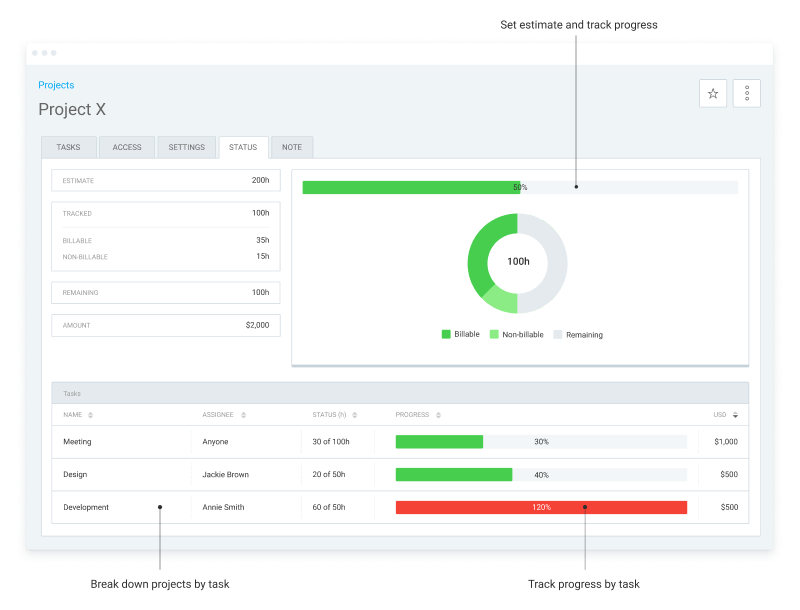
3. Keep a compelling scoreboard
Track how much time you spend in deep work each day and put it somewhere visible to motivate you. You can use a productivity tracker or gamify your tasks by marking off each day you spent engaged in deep work in your calendar.
💡 Clockify pro tip
The human brain adores reward systems, and they can be especially helpful when we’re trying to build a new habit, such as engaging in deep work.
Make deep work a part of your everyday routine by introducing a rewarding productivity technique. Find all about it from the following article:
4. Create a cadence of accountability
To keep yourself accountable, you should have some sort of Weekly Review (similar to GTD methodology). Analyze what went well, what went not so well, and what area you need to improve on. If you reach your weekly goals with ease, it’s time to push yourself further.
Although primarily intended for businesses, the four strategies can easily be adapted to serve your best purpose on the road to success. When you’re clear on what you want to achieve and you’re able to track your progress in detail, no goal is unreachable.
Make time to rest and recharge
Our brains can’t stay focused for an infinite amount of time — it’s crucial to let yourself rest and recharge. A tired brain is not capable of doing deep work, but even more important, forcing yourself to be productive all the time is not good for your mental health.
Don’t work after your working hours are done and don’t work instead of sleeping.
If you’re still not convinced — your unconscious mind is often better at detangling issues. You can’t force good ideas and creative solutions, they will come to you, usually at random times, like when you’re showering.
Do you know why a lot of us come up with the best ideas when we’re in the shower? Because you’re relaxed and your brain produces dopamine, which boosts your creativity. Also, research shows that we’re more likely to come up with creative solutions while we’re doing something monotonous, like showering or washing the dishes, since we’re on autopilot and our unconscious mind is free to work on something else.
Do you know why a lot of us come up with the best ideas when we’re in the shower? This is because our brain produces dopamine when we are relaxed. Dopamine, a true creativity booster, is the one responsible for all the eurekas in the shower.
Being on autopilot can actually do more wonders for your thought process than trying hard to fit in one more hour in front of the computer.
In his book Explaining Creativity, a professor of education at the University of North Carolina, Robert Keith Sawyer, explains this phenomenon. He says that people are more likely to come up with creative solutions while doing something monotonous, like showering or washing the dishes.
So, by giving yourself enough room to shift focus, you also give your busy mind enough time to process and work through all the complex and challenging tasks that might trouble you throughout the workday.
Give yourself deadlines to finish the work
If you give yourself 2 weeks to finish a project, you’ll finish it in 2 weeks.
If you give yourself a week for the same project, you’ll likely manage to finish it in a week.
It’s simple — “work expands to fill the period of time available for its completion”, it’s Parkinson’s law.
When setting a deadline, try to find a balance and give yourself just the right amount of pressure that will force you to concentrate and do the work, but will not make you too stressed out and/or panic. If you’re tracking time, it will be easier to estimate the right amount of time you need and find that balance.
What happens when people set shorter deadlines
Did you know that it’s still possible to finish your workload even when the time frame becomes shorter than usual?
A very interesting example is a software company 37signals (now Basecamp) who experimented with shortening the workweek to four days during summer. As their cofounder Jason Fried said (very wisely, if I may add), “people should enjoy the weather in the summer”. They weren’t working longer hours — they worked 32 hours a week. The only exception was customer support that worked normal hours, due to the nature of their job.
Does that work? Well, 14 years later, they still do it, so it must work.
Fried explained how:
“Very few people work even 8 hours a week. You’re lucky if you get a few good hours in between all the meetings, interruptions, web surfing, office politics, and personal business that permeate the typical workday.
Fewer official working hours help squeeze the fat out of the typical workweek. Once everyone has less time to get their stuff done, they respect that time even more. People become stingy with their time and that’s a good thing. They don’t waste it on things that just don’t matter. When you have fewer hours you usually spend them more wisely”.
Train your memory
If you need to work on your focus, you can do so by training your memory. As Newport said in the book:
“A side effect of memory training is an improvement in your general ability to concentrate”.
Leading a healthy lifestyle (especially eating a balanced diet and getting enough sleep), as well as playing memory games can improve your memory.
As a matter of fact, neuroscientific research has shown that the only difference between the brain of a memory champion and a regular human being’s brain lies in the amount of memory training they undertake.
So, if you’re up to supersizing your focus levels, try memorizing a deck of cards, order of the stack of books, or a list of words in a foreign language. These may not be particularly fun, but they will help you with deep work.
Minimize social media – or cut it down completely
It’s no secret that social media is made to be addictive. Checking your phone again and again for a new dose of dopamine interrupts your workflow and makes doing deep work near to impossible.
Maybe you’re even unaware of doing this, but science claims that cyberloafing or cyberslacking is one of the most common ways of wasting time when we should be working.
If you catch yourself glancing at that DM quickly or googling your dentist’s work hours when you should be deeply focused, you could be guilty of cyberslacking.
However, it’s not all doom and gloom yet.
💡 Clockify pro tip
If you have trouble with procrastination, you may find this article helpful:
Try going without social media for 30 days, as an experiment. After that time passes, ask yourself would these last thirty days have been notably better if you had been able to use that service? Did people care that you weren’t using that service?
If the answers were no, you won’t lose anything by deleting social media.
If at least one answer was yes, don’t delete them, but try to minimize your social media consumption.
Try discovering other forms of entertainment and ways to pass the free time. Trying a new hobby, reading, spending more time in nature and/or with your friends and family are all great options.
Schedule your whole day, including breaks
When we don’t take a step back and think about the way we’ll spend the next day, it’s not uncommon to waste time and forget about our goals.
To avoid that, you should schedule your time ahead, having in mind the goals you are trying to achieve and making sure you have a healthy balance between work and life.
Your day probably won’t go exactly as planned, but it’s important to have a plan regardless.
Newport recommends time-blocking, which means dividing your time into blocks and assigning a task to each block. Include meals and breaks in your schedule, too. You can group similar shallow work and do it in one time block, after a block of deep work.
Other options are using timesheet templates, to-do lists, or a time tracking app.
At first, you may have trouble with estimating how much time you need for a certain task, but as time goes, you’ll get better at it. If you use a time tracking app, you can use the data you collected over time to estimate it as accurately as possible.
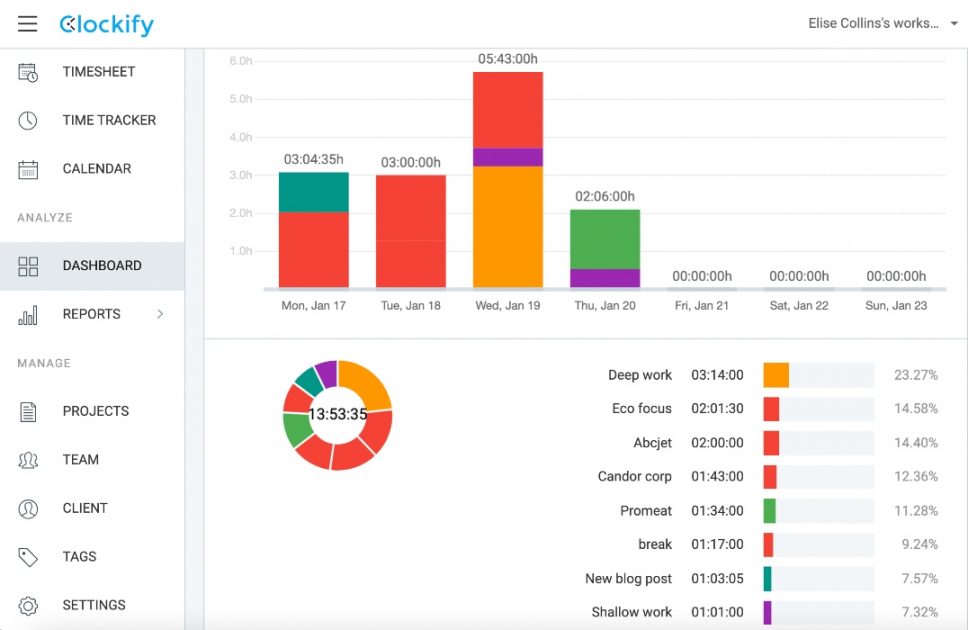
Schedule breaks and ban any distractions when you’re not on a break. Although your brain might get bored after a while, try to embrace that boredom and power through.
💡 Clockify pro tip
Did you know that being bored is actually good for you? Find out why in our blog post:
I used to schedule breaks when I was a student and preparing for exams; it was easier to stay focused when I knew I had a break coming soon and I had to study only for 30 more minutes, not until the end of time.
I have a degree now, so I can confirm it works.
Spend less time on emails
It’s true — emails are bad for us.
Linda Stone, a former executive at Microsoft and Apple, has noticed that a strange thing happens when we respond to emails. Most of us start to breathe shallowly or hold our breaths while typing. This unusual phenomenon is called email apnea and it affects our stress levels, sleep, memory and it can even trigger depression.
Long story short, you don’t need to be responding to emails 24/7.Set expectations in advance, for example, you can state: “I respond to emails Mon–Fri from 4 p.m. to 5 p.m.” or “I’ll only respond to emails that are a good match to my schedule and interests.”
You can also shorten email conversations by saying something like:
“I’d love to meet up. I’m free Mon 3–4 p.m., Wed 10–11 a.m., and Thu 2–5 p.m.. Are you available at any of those times? If so, send an invitation to my calendar for the time that works for you and I’ll see you then.”
Instead of just saying:
“I’d love to meet up. When are you free?”
See how the former is faster and straight to the point?
If you are the one writing emails to others, write them in a way that generates a response.
If you’re writing to someone who has a busy schedule, they may not be very likely to respond to
“I’d like to meet up. Are you available anytime soon?”
Instead, try writing something like this:
“I’d like to discuss X, which may interest you because of Y. Is it okay if I stop by tomorrow to see if it might complement your current project?”
Make a grand gesture
How to let your brain know you mean business? If everything else fails, make a grand gesture.
Grand gesture means making an additional effort by changing the scenery and perhaps even investing some money. By doing that, you increase the perceived importance of the task.
In 2007, J.K. Rowling was struggling to finish The Deathly Hallows. It was the final book of the Harry Potter series, so the expectations and the pressure were high. It was a project that required deep work and she just didn’t have enough concentration, distractions were everywhere.
So what did she do? She made a grand gesture — she booked a suite in a five-star Balmoral hotel in downtown Edinburgh and ended up finishing the book there.
💡 Clockify pro tip
If you’re looking for more proven ways to improve your productivity levels, don’t miss out on our:
I think investing money helps as much as changing the scenery, if not more — you are more likely to do what you came to do since you don’t want to waste your hard-earned money.
It has always worked for me: I used to study for my university exams only in the library, never at home. The combination of a distraction-free space and the fact that I paid to enter made it easier for me to concentrate and get my work done.
Conclusion
Deep work is a skill that requires time and practice, but it’s very highly rewarding. By working on it, not only you’ll be able to master hard things and produce at an elite level in terms of both quality and speed, but the work you produce will also give you a lot of personal satisfaction.
If you master the art of deep work, you will be able to master everything else.
✉️What is your experience with deep work? Let us know at blogfeedback@clockify.me, for a chance to be featured in this or our future blog posts.
